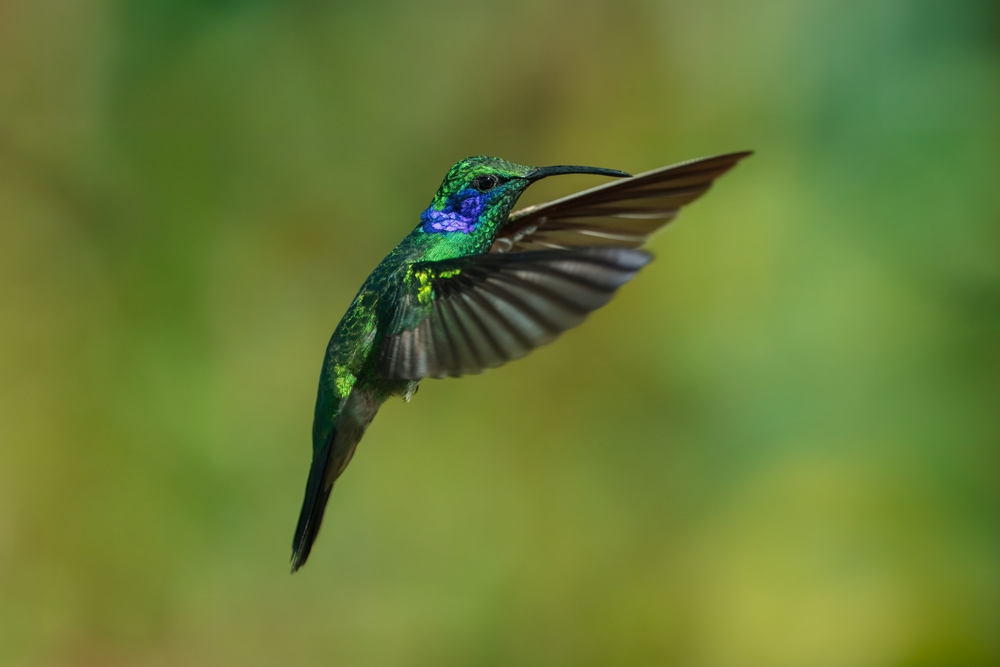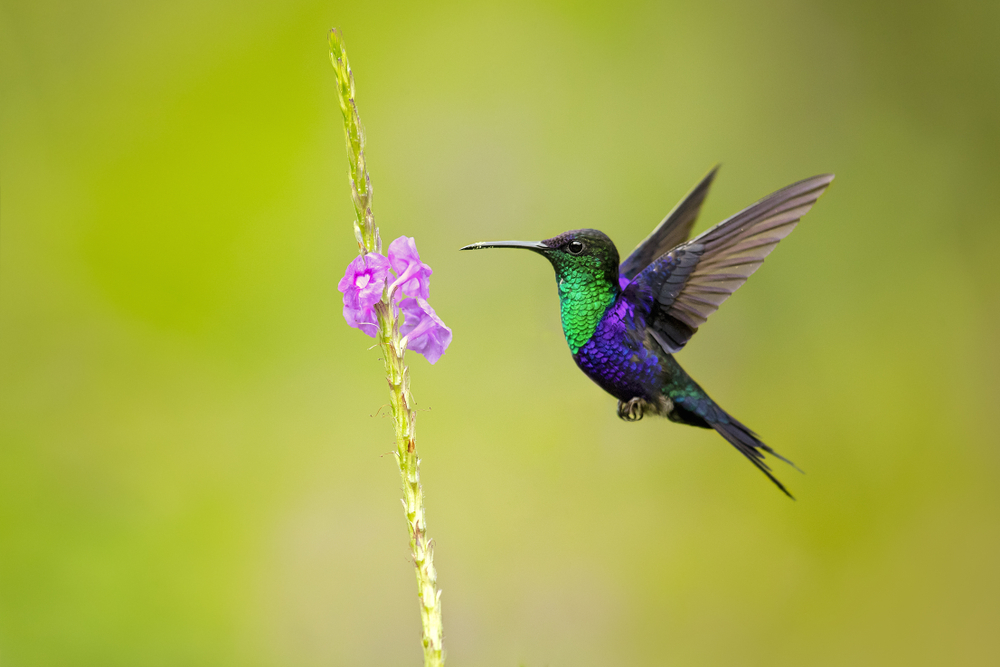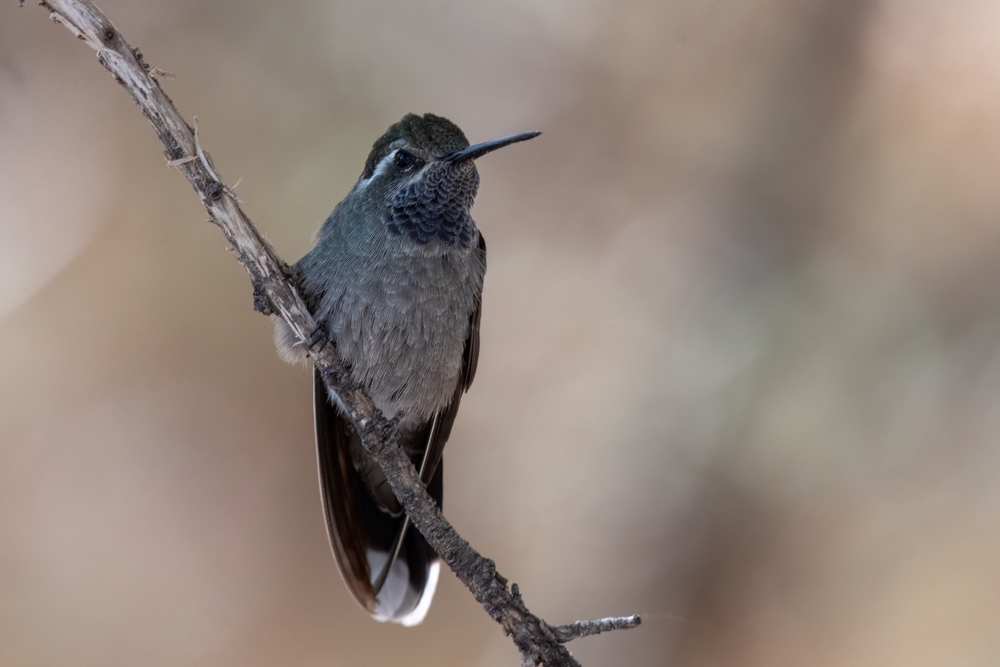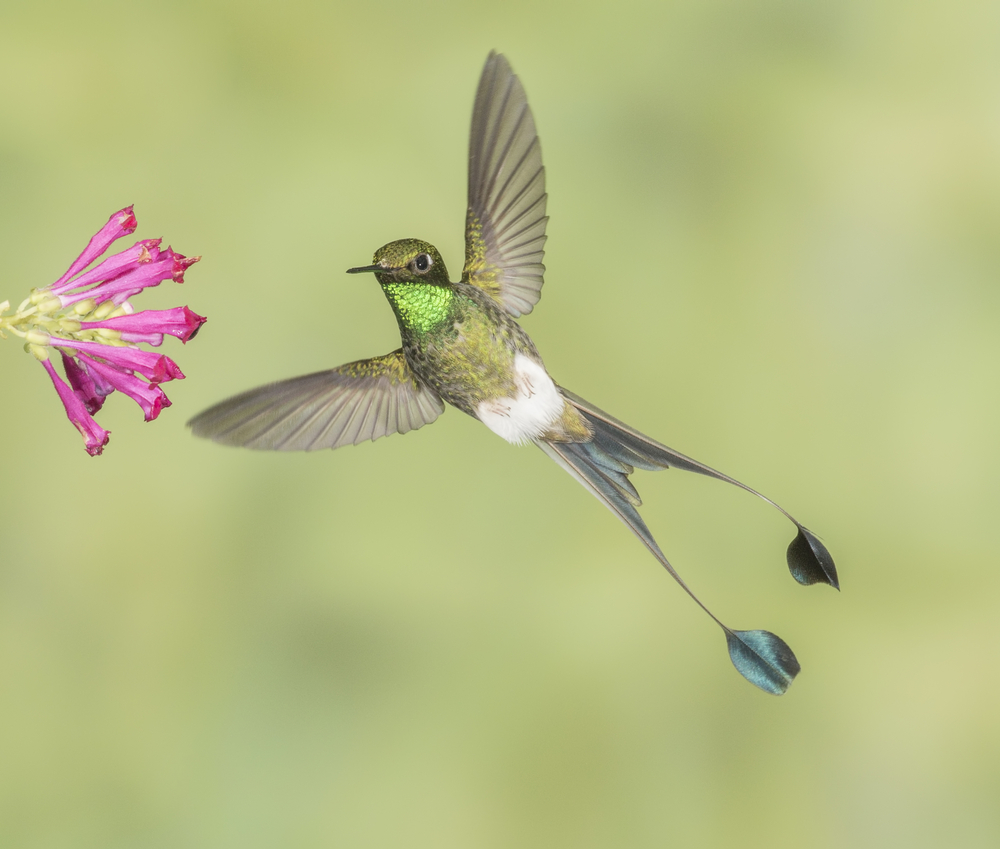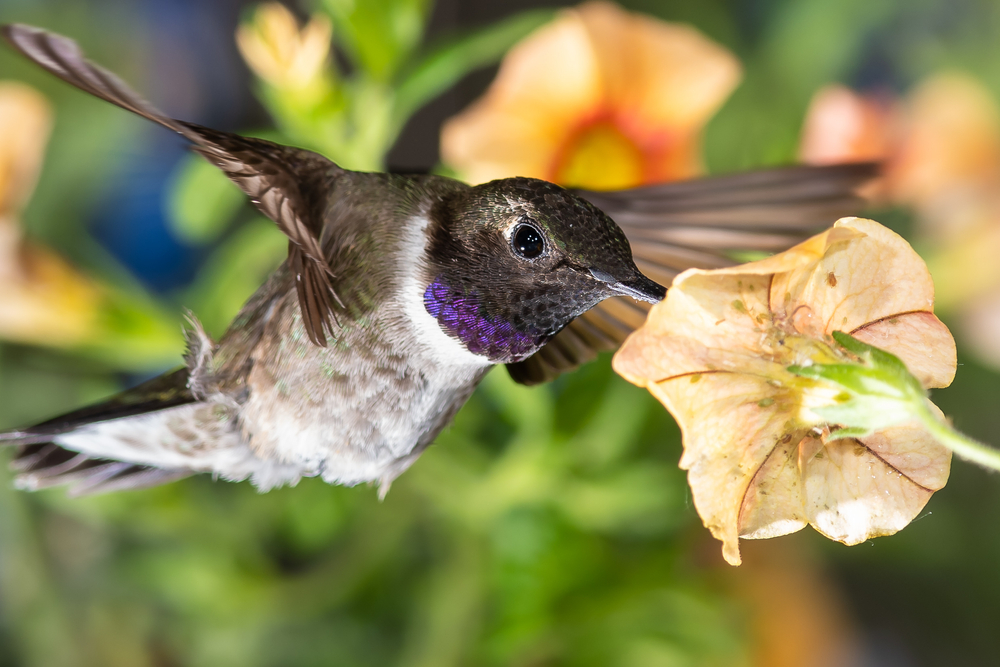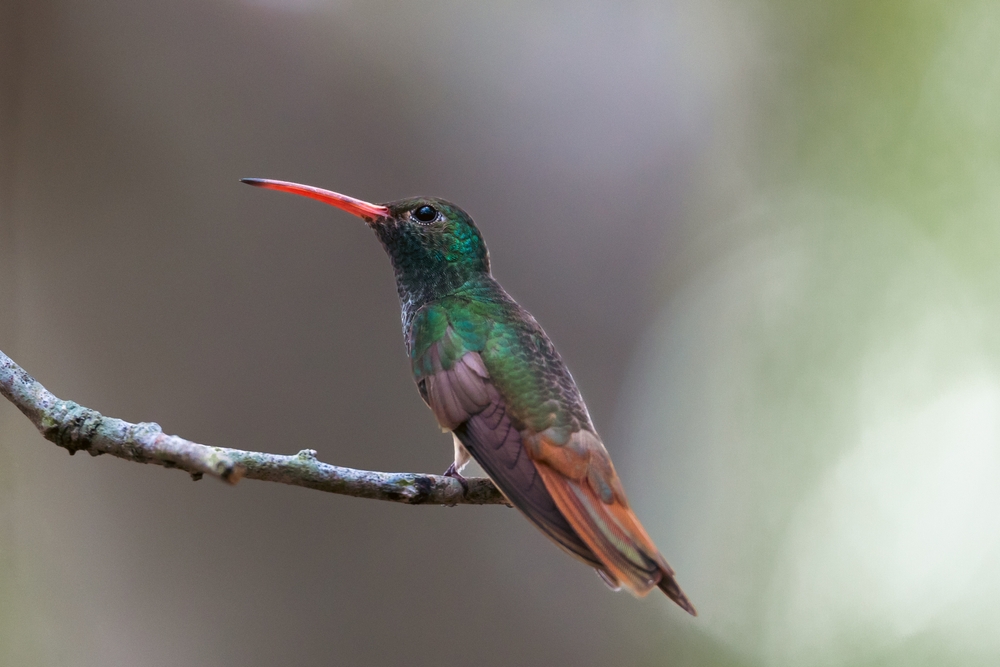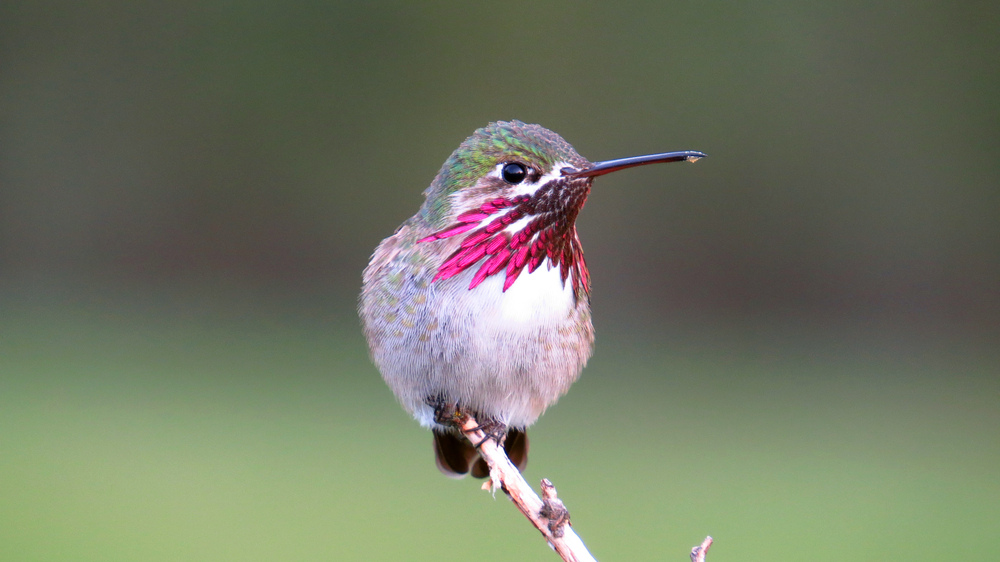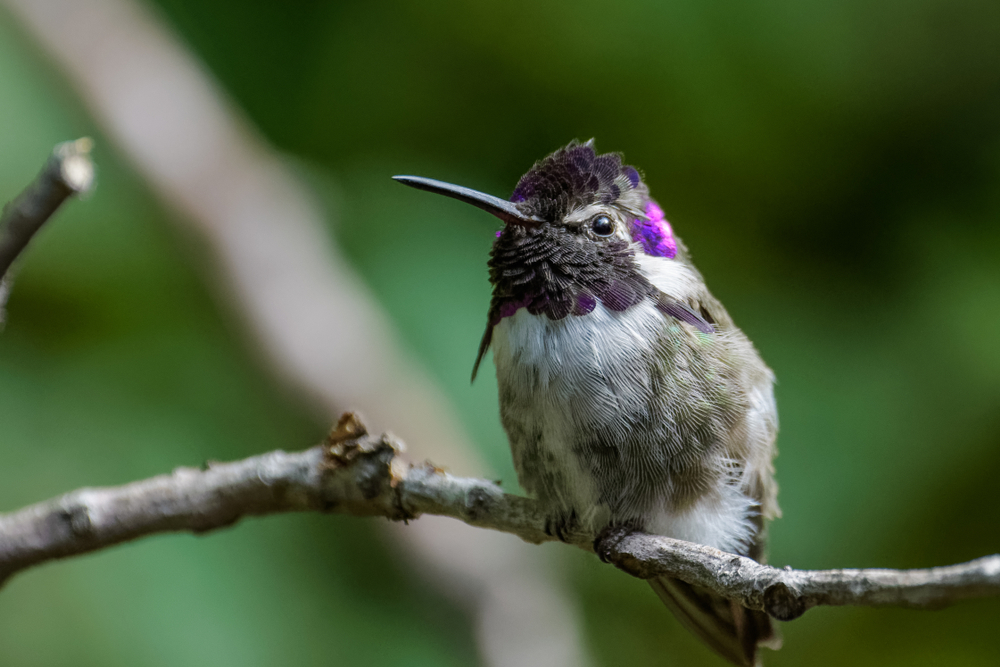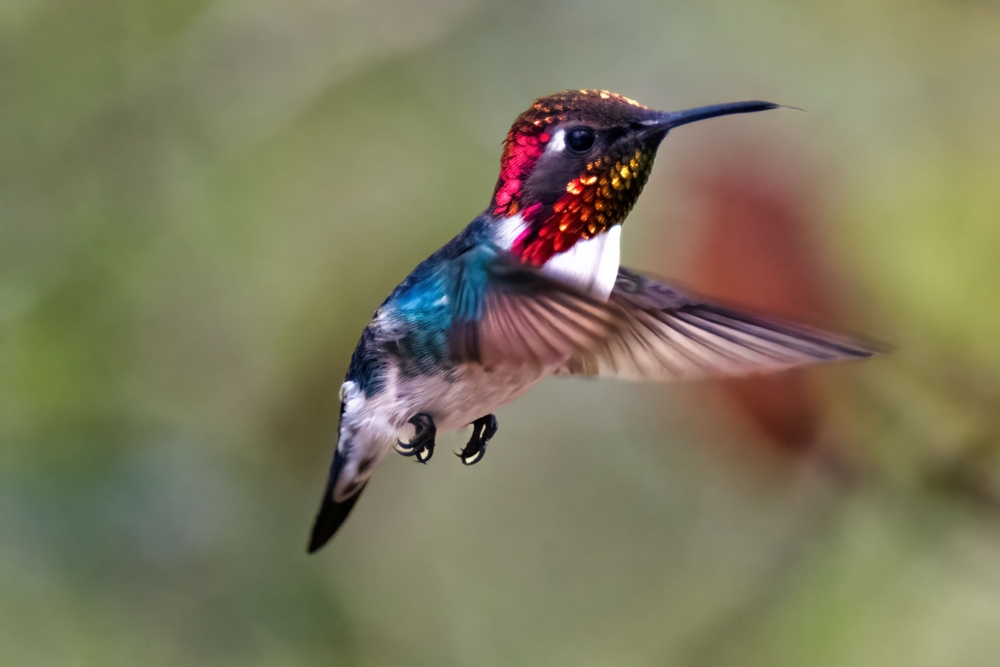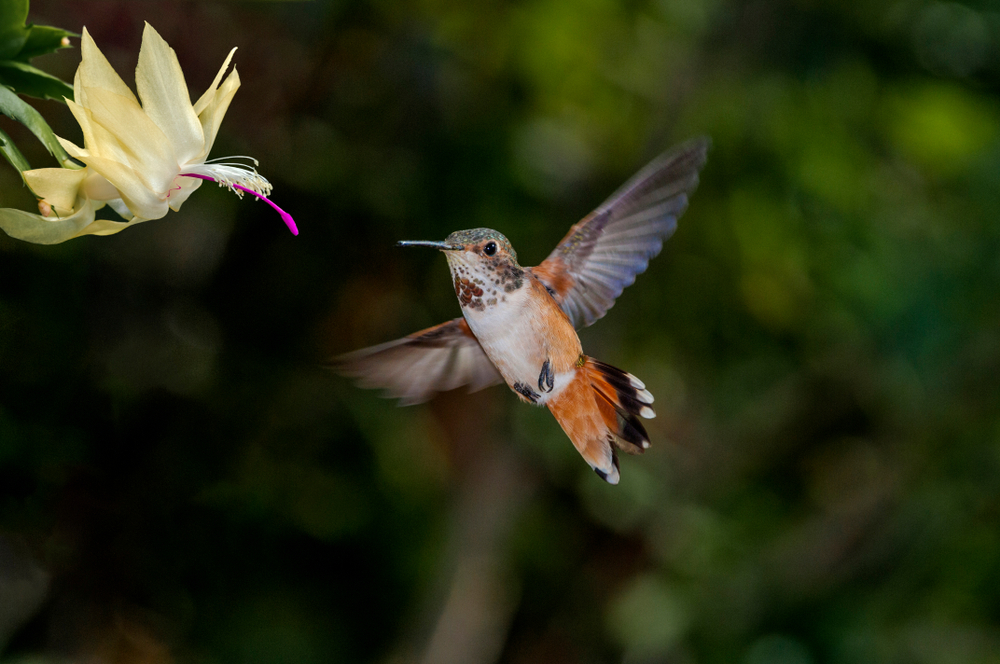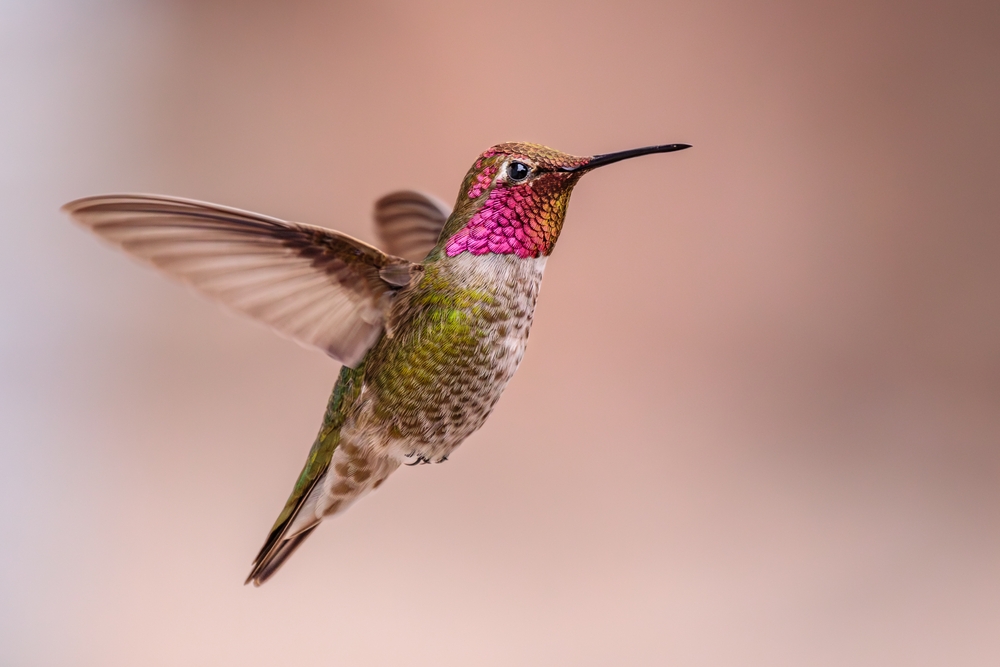The Long-tailed Sylph (Aglaiocercus kingii) is closely related to other sylphs in the Aglaiocercus genus, particularly the Venezuelan Sylph (Aglaiocercus berlepschi) and the Violet-tailed Sylph (Aglaiocercus coelestis), which also feature elongated ornamental tails.
About
The Long-tailed Sylph (Aglaiocercus kingii) is one of the most spectacular hummingbirds of the family Trochilidae, native to the Andean cloud forests of Colombia, Ecuador, Venezuela, and northern Peru. It inhabits elevations between 1,200 and 3,000 meters (4,000–9,800 ft), where dense forests, forest edges, and flowering clearings provide rich feeding grounds. Known for its extraordinary tail feathers, the Long-tailed Sylph is often considered one of the most dazzling jewels of the Andes.
This medium-sized hummingbird measures about 15–21 cm (6–8 in) in length, though nearly two-thirds of this is due to the elongated outer tail feathers of males. Males are breathtaking in appearance, with glittering green plumage, a violet-blue throat patch, and their namesake iridescent blue-green tail streamers, which trail behind them like ribbons as they fly. Females are smaller, lacking the extravagant tail, and are more subtly colored with green upperparts and whitish underparts washed with buff.
The Long-tailed Sylph feeds primarily on nectar from a wide range of tubular flowers, especially those adapted for hummingbird pollination. Its long bill and hovering ability allow it to reach deep into blossoms, while it also consumes small insects and spiders for protein. Males are highly territorial, often displaying their long tails in dramatic flights to chase rivals or court females.
Breeding occurs throughout much of the year, depending on local conditions. Females alone build tiny, cup-shaped nests of moss, lichens, and spider silk, usually suspended on branches in sheltered forest areas. Two small white eggs are laid, and the female incubates and raises the chicks without help from the male.
Though not considered globally threatened, the Long-tailed Sylph is reliant on intact montane and cloud forest habitats. Its beauty, elegance, and ecological role as a pollinator make it a prized species for birdwatchers and conservationists alike.
Physical Characteristics
Plumage:
The Long-tailed Sylph (Aglaiocercus kingii) is one of the most spectacular hummingbirds of the Andes, known for its extravagant tail.
-
Male: Shimmering emerald-green body, glittering blue throat, and extremely long metallic blue-green tail streamers that can be 3 times the body length. The wings are dark with green highlights.
-
Female: Much shorter-tailed, with a green back, whitish underparts, and buffy flanks. The throat is speckled gray, and the tail is shorter with green central feathers and white-tipped outer feathers.
Head:
The crown and face shine with metallic green. The bill is straight, slender, and black, suited for tubular Andean flowers. Males use their long tails in both courtship and dominance displays.
Body:
Small and compact, with males elongated dramatically by the tail streamers. Females appear much plainer and smaller due to their short tails.
Size:
-
Male: Body length 5.1–6.3 in (13–16 cm), but with tail included up to 10–15 in (25–38 cm).
-
Female: 3.9–4.3 in (10–11 cm) total length, much shorter-tailed.
-
Wingspan: About 5.5 in (14 cm).
-
Weight: 0.2–0.3 oz (5–8 g).
Feet & Tail:
Feet are tiny, adapted only for perching. The male’s tail consists of two elongated blue-green metallic streamers that trail behind in flight. Females have a normal short tail with white-tipped outer feathers.
Flight Style:
Wingbeats average 50–55 per second, enabling precise hovering. The male’s long tail streamers create drag, making flight less efficient but visually stunning. Males perform tail-flaring displays to attract mates.
The Long-tailed Sylph’s jewel-like green plumage, glittering throat, and spectacular tail streamers in males make it one of the most ornamental and recognizable hummingbirds of the Andes.
Reproduction
Breeding Season:
The Long-tailed Sylph breeds during the wet season in the Andes, which varies by region but generally spans February to June, aligning with peak flower abundance.
Courtship:
-
Males display their extravagant long tail streamers, fanning and swinging them during aerial chases and hovering near females.
-
They perch conspicuously in sunlight, flashing their glittering blue throat and emerald body plumage.
-
As is typical of hummingbirds, males do not assist in nesting or raising young after mating.
Nesting:
-
The female alone builds the nest, often on sheltered branches, ferns, or vines in montane forests.
-
Nests are tiny cups, about 1.5 in (4 cm) across, constructed of moss, plant down, and spider silk, camouflaged with lichens.
-
Placement is usually 3–10 ft (1–3 m) above ground, often near flowering plants.
Eggs:
-
A clutch contains 2 small white eggs, each about the size of a pea (~0.5 in / 1.3 cm).
Incubation:
-
Lasts about 15 to 17 days.
-
Only the female incubates.
Chick Development:
-
Hatchlings are altricial—blind, featherless, and fully dependent.
-
The female feeds them regurgitated nectar mixed with tiny insects.
-
Nestlings fledge at about 20 to 23 days, though they may remain near the mother for another week or two.
Maturity:
-
Juveniles begin independent foraging soon after fledging.
-
Sexual maturity is reached at about 1 year of age, when males begin to develop elongated tail streamers.
The Long-tailed Sylph’s reproduction highlights the male’s ornamental tail displays for attracting females and the female’s sole responsibility for nest building and chick rearing.
Lifespan
In the Wild:
Long-tailed Sylphs generally live 4 to 6 years in their native Andean cloud forests, though many do not survive their first year due to predation, disease, or food scarcity.
In Captivity:
Rarely kept outside of rehabilitation, but with reliable food and no predators they may live slightly longer, sometimes up to 7 or 8 years.
Record Lifespan:
The oldest known banded Long-tailed Sylph lived to just over 8 years, which is exceptional for such a small hummingbird.
Threats to Longevity:
-
Predation: Vulnerable to hawks, snakes, larger birds, and arboreal mammals; chicks and eggs may be taken by lizards or ants.
-
Tail Handicap: Males’ long streamers, while beautiful, make them less maneuverable and more visible to predators, slightly reducing survival compared to females.
-
Habitat Loss: Deforestation and agricultural expansion in the Andes threaten feeding and nesting sites.
-
Climate Change: Alters flowering cycles, disrupting the tight link between breeding and nectar availability.
Despite these risks, Long-tailed Sylphs are fairly common in suitable Andean habitats, and their spectacular appearance continues to make them one of the most celebrated hummingbirds in South America.
Eating Habits
Diet:
The Long-tailed Sylph, like most hummingbirds, feeds on a combination of nectar and insects:
-
Nectar: Primary food source, taken from tubular flowers such as fuchsias, bromeliads, and other Andean blossoms.
-
Insects & Spiders: Tiny flies, gnats, aphids, and small spiders provide protein, especially during chick-rearing.
-
Sap: Occasionally visits sapsucker wells for tree sap and trapped insects.
Foraging Behavior:
-
Uses its slender, straight bill and extendable, brush-tipped tongue to lap nectar at high speed (10–13 licks per second).
-
Favors forest edges, clearings, and flowering shrubs within Andean cloud forests.
-
Males often defend feeding territories, chasing away rivals with aggressive aerial chases and tail-flaring displays.
-
Females more often follow trapline foraging, visiting a sequence of flowers in rotation rather than defending one patch.
Feeding Adaptations:
-
Wingbeats (~50–60 per second) allow them to hover precisely in front of flowers.
-
Can enter torpor on cold Andean nights, lowering metabolism drastically to conserve energy.
-
Males’ long tail streamers, though ornamental, create drag during flight, making feeding less efficient compared to females.
Role in Ecosystem:
Long-tailed Sylphs are important pollinators in Andean ecosystems, transferring pollen between high-altitude flowering plants. By also consuming insects, they help regulate small insect populations.
The Long-tailed Sylph’s ornamental tail, territorial males, and role as a pollinator make it both a stunning and ecologically valuable bird of the Andes.
Uniqueness
Exaggerated Tail Feathers:
Males have extraordinarily long blue-green tail streamers, often three times the length of their body. While beautiful, these feathers reduce flight efficiency, making them a classic example of sexual selection.
Sexual Dimorphism:
The difference between the sexes is striking. Males display their elongated tails and glittering blue throats, while females are shorter-tailed, with white underparts and subtle spotting.
Courtship Displays:
Males perform tail-flaring, pendulum flights, and aerial chases to show off their spectacular streamers. These displays are as much about dominance over rivals as they are about attracting females.
High-Altitude Specialist:
Found in Andean cloud forests from Venezuela to Bolivia, it thrives in humid, high-elevation habitats (up to 10,000 ft / 3,000 m).
Survival Trade-off:
The male’s tail, while ornamental, makes him more visible to predators and less agile than the female. This trade-off underscores the evolutionary cost of ornamentation for mating success.
Symbol of the Andes:
Because of its dazzling appearance, the Long-tailed Sylph is considered one of the most emblematic hummingbirds of South America, often featured in ecotourism and conservation campaigns.
The Long-tailed Sylph’s dramatic tail streamers, sexual dimorphism, and high-altitude lifestyle make it one of the most unique and iconic hummingbirds in the world.
Be the First to Share Photos of This Species.
FAQ’s
1. What is the closest species to the Long-tailed Sylph?
2. How does the Long-tailed Sylph compare to other hummingbirds?
Unlike most hummingbirds, males of this species have extravagant tail streamers that can triple their body length. While this makes them less maneuverable in flight, it gives them a spectacular courtship advantage and makes them one of the most visually striking hummingbirds.
3. What national parks provide the best opportunities to see a Long-tailed Sylph?
They are best observed in Andean cloud forests. Top locations include Podocarpus National Park (Ecuador), Chingaza National Natural Park (Colombia), and Sangay National Park (Ecuador), where flowering plants support thriving populations.




































































